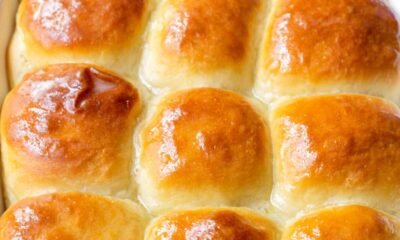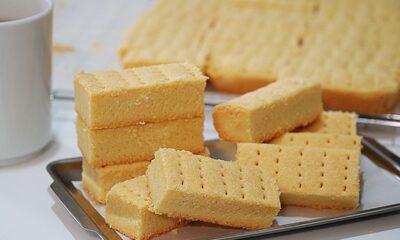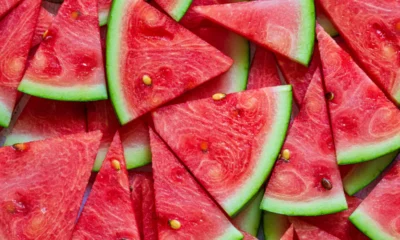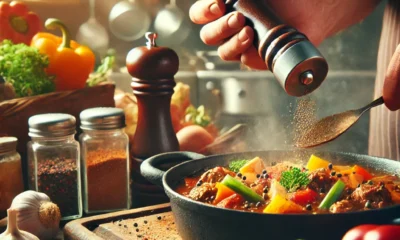FOOD
Shrimp Salad: A Quick Healthy Dish To Try
Published
10 months agoon

Shrimp salad is a classic dish, is easy to make and can be served in a variety of ways. This meal is more of an old-school dish with a touch of modern spices.
Shrimp salad can be used for occasions, a regular healthy dish, or for once in a while family dish. There is no special time to eat this delicious meal except if you want to call it “occasion” food. Regardless, it can be eaten at any time you deem fit.
Shrimp salads are healthy for the body as they contain most of the nutrients the body needs for general body health and function. We shall take a look at different segments of shrimp and shrimp salad below.
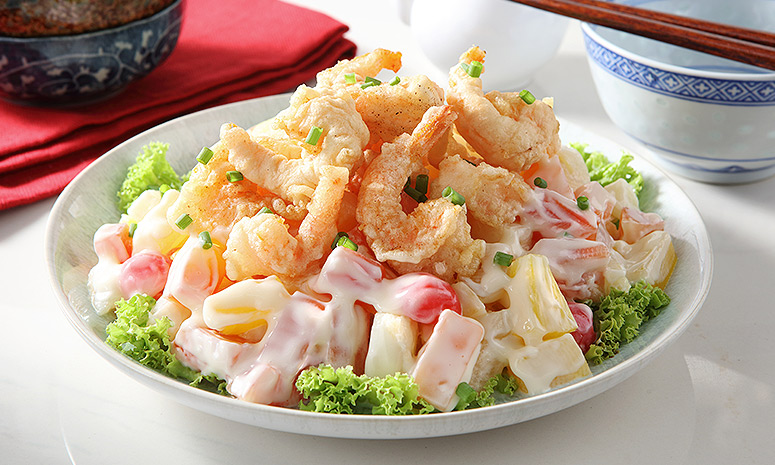
What is shrimp salad made of?
Shrimp salad contains different healthy vegetables and spices that nourish the body to total health.
Ingredients include:
- Diced cucumber
- Chopped cabbage
- Chopped onions (spring onions and cooking onions)
- Mayonnaise or spiced cream
- Lemon or lime juice
- Peeled and deveined grilled or fried shrimp
- Cooking spices
- Cooked macaroni
- Pepper
What goes well with shrimp salad?
Crisp or grilled green beans and corn cob are nourishing side dishes for shrimp salad. They are both low in calories and high in nutrients, making them a healthy and delicious addition to any meal.
You can also serve your shrimp salad with freshly sliced pineapple, mango, or peach slices. These fruits are all sweet and juicy, and they would pair well with the savoury shrimp salad. The sweetness of the fruit would help to balance out the flavours of the salad, and it would also add a pop of colour and whole nutrients.
For a spicy kick, you could add a pinch of cayenne pepper or chilli powder to the fruit slices. This would add a bit of excitement to the salad and make it even more flavourful.

Some other side dishes that would go well with shrimp salad include:
- Grilled fish or meat
- Roasted potatoes
- Fruit salad
- Watermelon slices
No matter what side dishes you choose, shrimp salad would be delicious and satisfying, and just perfect for any occasion.
How to cook shrimp to taste good
Shrimps require care while cooking. This only means that for your shrimp salad to turn out to taste better, you need to meticulously dig it down with your shrimp first.
A step-by-step breakdown on how to achieve a good taste is as follows:
- Preheat oven to 450°F.
- On a half-sheet pan, toss the shrimp with salt, garlic, cooking oil, pepper flakes, and lemon or lime juice.
- Let it sit for 10 minutes.
- Fry for 7 to 9 minutes, until pink and just cooked through.
Just some ideas for roasting shrimp:
- Use peeled and deveined shrimp for the easiest prep; that is if you love the easy life.
- If you are using large shrimp, cut them in half lengthwise so that they cook evenly.
- Don’t overcrowd the pan. If necessary, roast the shrimp in two batches. It is not a problem.
- Don’t overcook the shrimp. They should be pink or maybe a little brown when they are done.
Once the shrimp are cooked, you can let them cool slightly and then add them to your already prepared salad and mix until it turns out even.
What not to mix with shrimp
There is a common myth that eating shrimp and vitamin C together is dangerous. This myth is based on the fact that shrimp contains arsenic, and vitamin C can convert arsenic pentoxides into arsenic trioxide, which is a more toxic form of arsenic. But, there is no scientific evidence to support this claim.
In fact, studies have shown that eating shrimp and vitamin C together is perfectly safe. The amount of arsenic in shrimp is very low, and the amount of vitamin C needed to convert arsenic pentoxides into arsenic trioxide is much higher than what is typically consumed in a single meal.
![Best Creamy Shrimp Pasta Salad [Video] • Unicorns in the Kitchen](https://www.unicornsinthekitchen.com/wp-content/uploads/2019/05/Creamy-Shrimp-Pasta-Salad-square.jpg)
Foods not to combine with shrimp
There are a few other foods that are traditionally not combined with shrimp, such as chicken, pork, and red pumpkin. Yet again, no scientific evidence suggests that these combinations are dangerous. The only reason to avoid these combinations may be for personal preference or taste.
When eating shrimp, make sure it is cooked thoroughly. This is because undercooked shrimp can contain harmful bacteria. Also, choose shrimp that is fresh and has a mild, seafood odour.
Is shrimp cooked or raw?
It is highly important to cook shrimp thoroughly before eating, as raw shrimp can contain harmful bacteria that can cause food poisoning. Symptoms of food poisoning from shrimp can include nausea, vomiting, diarrhoea, stomach cramps, and fever. In severe cases, food poisoning can be life-threatening.
If you are unsure whether or not the shrimp are cooked through, you can use a food thermometer. The internal temperature of cooked shrimp should be at least 145 degrees Fahrenheit. Or simply, complete the cooking.
Why is it called shrimp?
The word “shrimp” comes from the Middle English word “shrimpe”, which is related to the Middle Low German word “schrempen”, which means “to contract or wrinkle”.
So, it is simply understood as a name which has been translated into its meaning.
How do I store my shrimp salad?
Stored in an airtight container in the fridge, shrimp salad will last for 2-3 days. When ready to serve, simply assemble the salad as desired.
Watch the video below to learn more about shrimp salad.
For more food content, check our food page here.
You may like
FOOD
Cooking Techniques For Beginners: Mastering The Kitchen Basics
Published
6 days agoon
July 21, 2024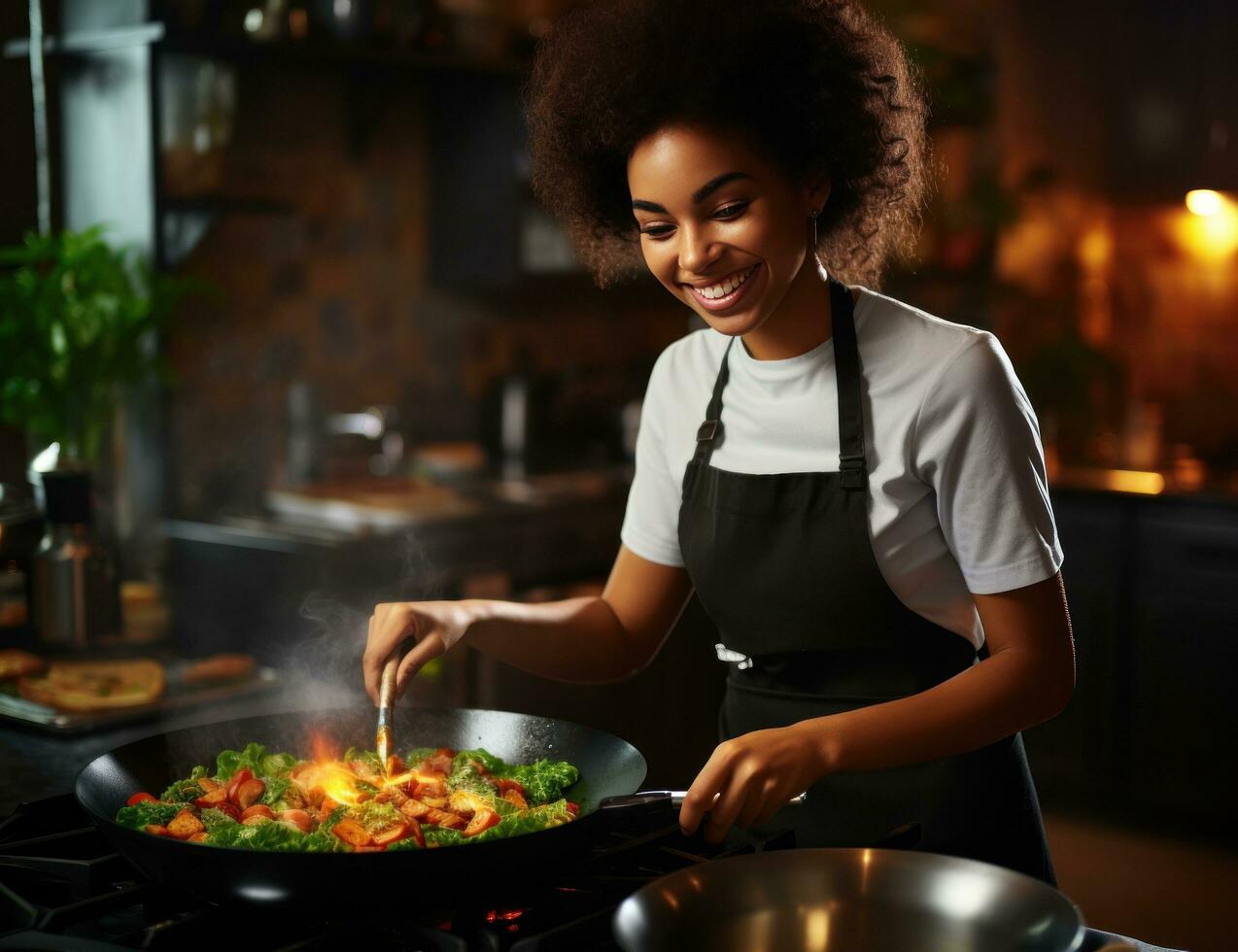
Welcome to the wonderful world of cooking! Whether you’re a complete novice or just looking to expand your culinary repertoire, mastering a few key techniques can take you a long way. This guide will break down some essential cooking methods for beginners, making you feel confident and creative in the kitchen.
Heat and Cooking Methods
The first step is understanding how heat interacts with food. Most cooking methods fall into two categories: dry heat and moist heat.
-
Dry Heat: This method uses direct heat to cook food, with little to no moisture involved. Examples include:
- Roasting: This involves surrounding food with hot air in an oven, perfect for meats, vegetables, and even some fruits.
- Baking: Similar to roasting, baked goods like cakes and breads rely on rising agents like yeast or baking powder to create structure.
- Sautéing: Food is cooked quickly in a hot pan with a small amount of oil, ideal for vegetables, meats, and some starches.
- Pan-frying: Similar to sautéing, but uses a slightly higher amount of oil to achieve a crispy exterior.
- Grilling: This method exposes food directly to radiant heat, often from a grill or grill pan, creating beautiful char marks.
-
Moist Heat: Here, food is cooked in a liquid or surrounded by steam. Examples include:
- Boiling: Submerging food completely in boiling water (212°F) is a fast and simple way to cook vegetables, pasta, and eggs.
- Simmering: Cooking food in a liquid just below boiling (around 180°F-200°F) is gentler and good for soups, stews, and delicate proteins like fish.
- Poaching: Food is gently cooked in simmering liquid, often flavoured with herbs and aromatics, perfect for eggs and fish.
- Steaming: Food is cooked by placing it over boiling water or in a steamer, allowing the steam to cook it gently. This method is excellent for preserving nutrients in vegetables and seafood.
Cooking Methods: Essential Knife Skills
Sharp knives are essential for safe and efficient cooking. Mastering a few basic cuts will make food preparation a breeze:
- Chopping: This involves cutting food into small, even pieces. Use a rocking motion with your knife tip resting on the cutting board.
- Slicing: Thin, even cuts are achieved by holding the food securely with your non-dominant hand and gliding the knife forward with a sawing motion.
- Dicing: Combine chopping and slicing to create small cubes.
Cooking Methods: Mastering the Art of Seasoning
Seasoning is the magic touch that elevates a dish. Salt enhances natural flavours, while pepper adds a touch of heat. Experiment with other spices and herbs to discover your favourites. Here’s a tip: season food throughout the cooking process, not just at the end.
Essential Kitchen Tools
Equipping your kitchen with a few basic tools will make cooking more enjoyable:
- Sharp chef’s knife: Your everyday workhorse for chopping, slicing, and dicing.
- Cutting board: A sturdy board protects your countertop and keeps your knife sharp.
- Mixing bowls: In various sizes for mixing ingredients, preparing batters, and serving.
- Spatulas: For flipping, stirring, and scraping.
- Spoons: Mixing spoons, serving spoons, and slotted spoons for draining.
- Pots and pans: A large pot for boiling, a saucepan for simmering, and a skillet for sautéing and frying.
- Baking sheet: Perfect for roasting vegetables, meats, and baking cookies.
Tips for Success
- Read the recipe thoroughly: Understand the steps and ingredients before you begin.
- Prep your ingredients: Wash, chop, and measure everything beforehand for a smooth cooking flow.
- Don’t overcrowd the pan: This can trap steam and lead to uneven cooking.
- Learn to control heat: Adjusting the heat as needed is key to preventing burnt or undercooked food.
- Taste as you go: Seasoning is an ongoing process. Don’t be afraid to adjust flavours along the way.
- Most importantly, have fun! The kitchen is your playground to experiment, create, and enjoy the delicious rewards.
With these cooking methods for beginners and a little practice, you’ll be whipping up delicious meals in no time. Remember, cooking is a journey, so relax, embrace the learning process, and enjoy the delicious adventures that await!
Check out more articles on food here.

Tear gas is a chemical irritant used in some situations to control crowds. If you’ve been exposed to tear gas, it’s important to know what to eat and drink to help your body recover. This article will guide you through the best foods and drinks to have after tear gas exposure.
Why food and drink choices matter after tear gas exposure
After tear gas exposure, your body needs help to heal. The right foods and drinks can:
- Reduce inflammation (swelling) in your body
- Help flush out the harmful chemicals
- Boost your immune system (the body’s defence system)
- Provide comfort and relief
Hydration: the most important step
Drinking plenty of water is the single most important thing you can do after tear gas exposure. Water helps to:
- Flush out the tear gas chemicals from your body
- Keep you hydrated (having enough fluids in your body)
- Soothe your throat if it’s irritated
Aim to drink at least 8-10 glasses of water in the hours after exposure. Keep drinking water regularly throughout the next few days.
Other hydrating drinks include:
Coconut water
This is a good choice because it has natural electrolytes (minerals that help with hydration), is gentle on your stomach, and can help replace fluids you’ve lost.
Herbal teas
Some helpful herbal teas include:
- Chamomile tea: It can help calm your nerves and reduce inflammation.
- Ginger tea: This can help with nausea and has anti-inflammatory properties.
- Green tea: It’s full of antioxidants that can help your body heal.
Avoid caffeinated drinks like coffee or regular tea, as these can dehydrate you.
Fruits and vegetables
Fruits and vegetables are important because they contain vitamins and minerals that help your body heal. They have antioxidants that fight inflammation. Also, they provide fibre to help your digestive system.
Some good choices are:
- Berries (strawberries, blueberries, raspberries)
- Citrus fruits (oranges, grapefruits) (Wait a day or two if your throat is sore)
- Leafy greens (spinach, kale)
- Carrots
- Bananas – these are another soft and easy-to-eat option. They’re also a great source of potassium, a mineral that can help replenish electrolytes lost through sweating or irritation.
Soups and broths
Soups and broths are a great choice after tear gas exposure for a few reasons. First, if your throat is sore and swallowing is painful, broths and soups are very easy to swallow. They’re nice and smooth, going down gently without irritating your throat further.
Second, broths and soups provide extra fluids to your body. This is important because tear gas can dehydrate you, and staying hydrated helps your body flush out the tear gas chemicals.
You can make your own vegetable soup packed with chopped carrots, celery, and spinach, or simply have some clear chicken broth for a quick and easy option. Both will help you rehydrate and feel better.
If your mouth or throat feels irritated and sore after tear gas exposure, some gentle foods can help soothe the discomfort and make eating a little easier.
Yoghurt
This is soft and cool food that’s easy to swallow. It’s also a good source of probiotics, which are live bacteria that help keep your gut healthy. Having healthy gut bacteria can be helpful during recovery because it supports your immune system.
Foods to avoid after tear gas exposure
While your body heals from tear gas exposure, it’s best to avoid certain foods that can irritate your throat and stomach even more.
Spicy foods
Put down the hot sauce for a few days! Spicy foods irritate your throat and stomach lining, which can already be inflamed from the tear gas. This will make you feel more uncomfortable and might even cause heartburn.
Acidic foods
Take a break from those tangy tomatoes and citrus fruits (except maybe strawberries if your throat feels alright). Acidic foods irritate your already sore throat, making it feel scratchy and painful. Wait a day or two after exposure before having these again.
Vinegar-based foods
Similar to acidic fruits, dressings, marinades, and condiments with vinegar can irritate your throat. It’s best to avoid them for a few days after tear gas exposure.
Dairy products
Some people find that dairy products, like milk, cheese, and yoghurt, can increase mucus production. This can make congestion worse, especially if you’re already experiencing a runny nose or post-nasal drip from the tear gas. If you notice more mucus after consuming dairy, avoid it for a few days and see if your symptoms improve.
Alcohol
Hold off on that celebratory beer! Alcohol is dehydrating, and you need plenty of fluids to flush out the tear gas chemicals. Drinking alcohol can also worsen your overall discomfort and slow down your healing process. It’s best to wait at least 24 hours after exposure before consuming any alcohol.
Additional tips
- Eat small, frequent meals if your stomach is upset.
- Choose foods that are room temperature or cool, not very hot.
- Listen to your body: If a food doesn’t feel good, don’t eat it.
In conclusion…
After tear gas exposure, focus on staying hydrated and eating foods that will help your body heal. Drink plenty of water and herbal teas. Eat lots of fruits and vegetables, and choose soft, gentle foods if your throat is sore.
Avoid spicy, acidic foods and alcohol. With the right food and drink choices, you can help your body recover more quickly from tear gas exposure.
For more articles like this, visit here.
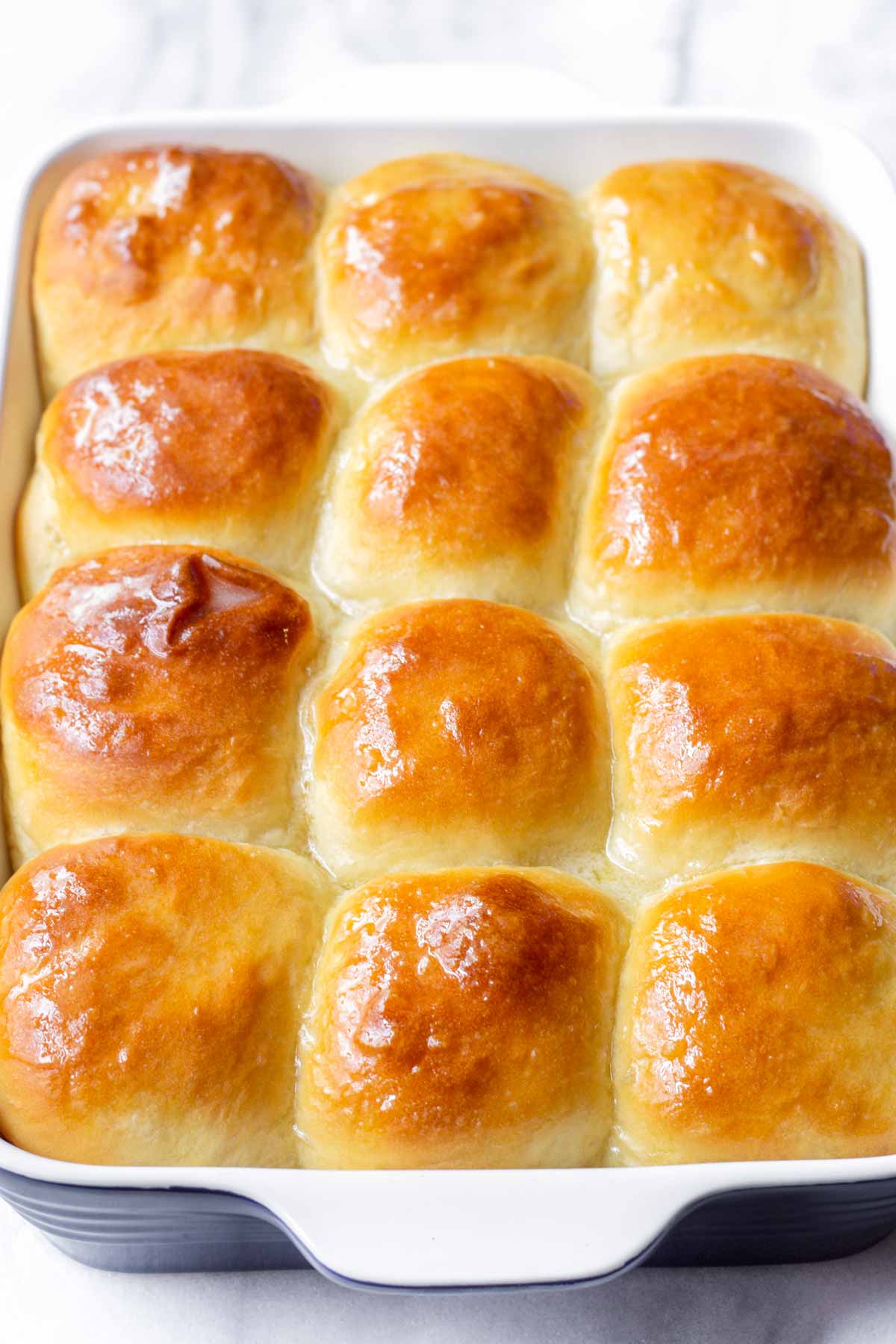
These soft, sweet honey butter dinner rolls are the perfect way to elevate any meal! This delightsome goodness is perfect for Sunday dinners, and special occasions and holidays.
They’re surprisingly easy to make and guaranteed to be a crowd-pleaser. Plus, they’re so delicious that you’ll be making them again and again.
Brushing them with honey butter sauce after baking takes them to the next level. These delightful rolls are perfect for any occasion, from Sunday dinners to holidays and special events.
:max_bytes(150000):strip_icc()/Simply-Recipes-Salted-Honey-Rolls-METHOD-24-e2eb07e4a6f24888bbcbeb3681984cda.jpg)
These dinner rolls are guaranteed to be a family favourite! The secret lies in the honey butter sauce, which creates soft, buttery rolls that melt in your mouth.
Want your rolls to rise faster? Heat some water in a heat-safe dish and place it in your cold oven on a lower shelf. The heat and steam will help activate the yeast and speed up the rising process.
Why you’ll love these honey butter dinner rolls
- They’re Irresistible! These rolls are so delicious, that they’re practically habit-forming. You won’t be able to stop at just one!
- They’re the ideal addition to any special occasion or holiday meal. They’ll add a touch of sweetness and melt-in-your-mouth goodness to your dinner table.
- Get ready for a delightful combination of soft and fluffy. These rolls have an incredible texture that practically melts in your mouth.
- The honey butter sauce is the star of the show! It adds a burst of flavour and richness that will have you wanting more.
- This recipe is mixer-free! No need to worry about extra equipment.
- As long as you can spare an hour and a half (or even more) for rising, you’re good to go. Plus, baking them is a breeze – they take less than 15 minutes!
- These rolls can be prepped in advance! Make them days or even weeks before you need them, and simply bake them fresh when you’re ready to serve.
What you’ll need to make Honey Butter Dinner Rolls:
For the rolls:
- All-purpose flour: This is the base for the fluffy dough.
- Warm whole milk and warm water: These activate the yeast and create a moist dough.
- Softened butter (room temperature): This adds richness and flavour to the rolls.
- Monk fruit sweetener or sugar (the recipe uses monk fruit): Choose your preferred sweetener for a touch of sweetness.
- Envelope of active dry yeast: This helps the dough rise for light and fluffy rolls.
- Egg (room temperature): This adds richness and helps bind the dough together.
- Salt: A pinch of salt enhances the overall flavour of the rolls.
For the honey butter sauce:
- Softened butter (room temperature): This creates a smooth and spreadable sauce.
- Honey: The star ingredient! Honey adds sweetness and a touch of floral flavour.
- Confectioners’ or powdered monk fruit or sugar: This ingredient (choose your preferred sweetener) adds a touch of sweetness and helps thicken the sauce for a perfect drizzle.
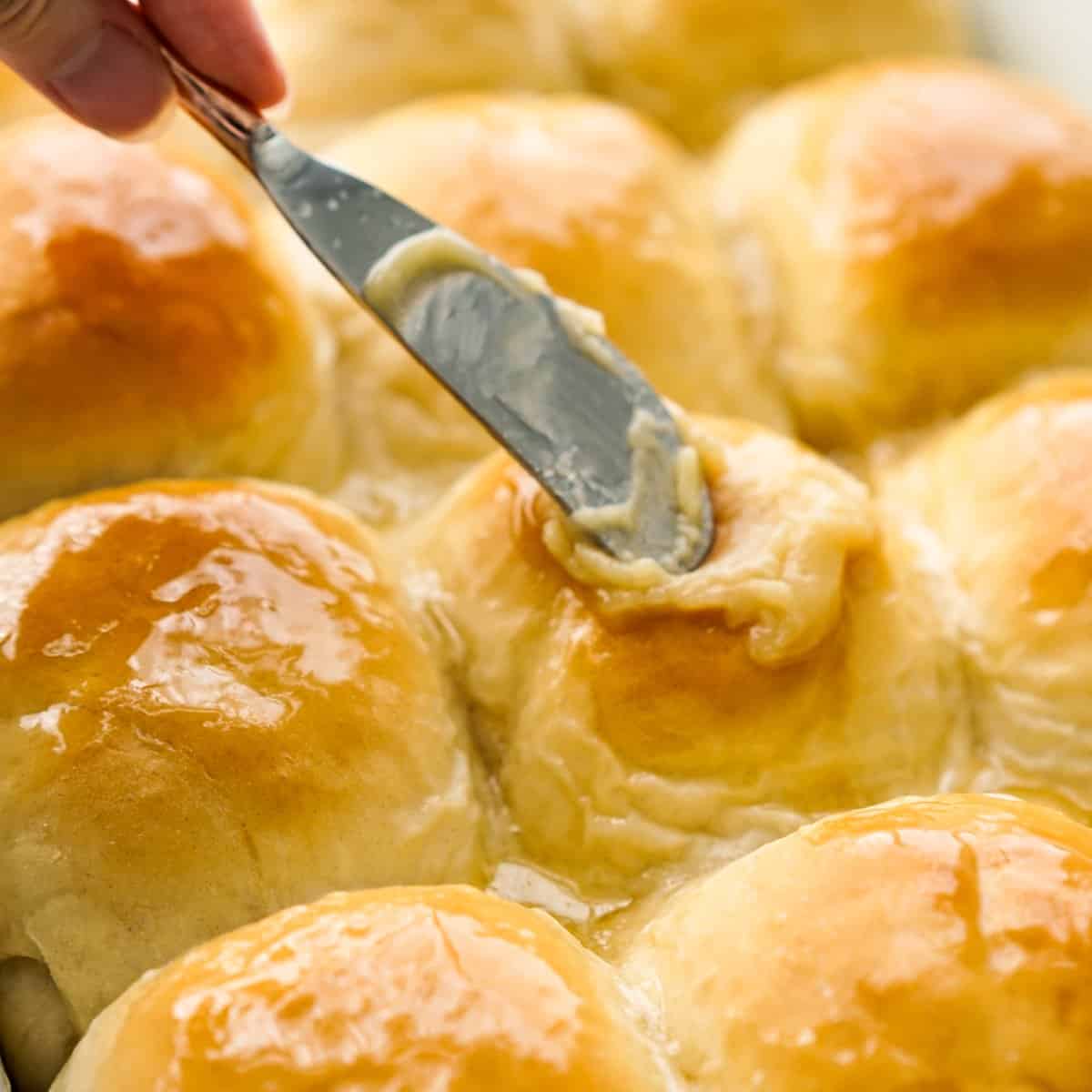
Let’s Bake Honey Butter Dinner Rolls, step-by-step
Get ready to make these amazing honey butter dinner rolls from scratch! Here’s a detailed guide:
1. Gather and prep:
- As with most recipes, prepping your ingredients makes things easier.
- First, we’ll activate, or “proof,” the yeast. In a bowl, combine warm water with the yeast packet and 2 teaspoons to 1 tablespoon of your chosen sweetener (monk fruit or sugar). Stir it all together and let it sit for about 5 minutes until foamy. This activates the yeast.
2. Make the dough:
- Once the yeast is proofed, add it to a large bowl with the warm milk, beaten egg, softened butter, and the rest of your chosen sweetener. Use a whisk to combine everything. Don’t worry if the mixture isn’t perfectly smooth – small butter lumps are okay.
- Now, add the flour and salt. Use clean hands to mix everything until it forms a dough ball. The dough might be a bit sticky.
3. First rise:
- Lightly oil another large bowl and place your dough ball inside. Cover it with plastic wrap and find a warm, quiet spot for it to rise. Let it sit for at least 45 minutes to an hour, or until it doubles in size.
4. Make the honey butter:
- While the dough is rising, prepare your honey butter sauce. Simply combine honey, butter, and powdered sweetener (or powdered monk fruit if that’s what you choose) with a spatula. Set this mixture aside for later.
5. Knead the dough:
- Once your dough has doubled in size, gently punch it down with your knuckles to release the air. Flour a pastry board and transfer the dough there. Knead the dough with your hands until it becomes smooth and elastic.
6. Roll and shape the dough:
- Divide the dough into two equal balls. Set one aside for now. Lightly flour your rolling pin and pastry board or mat. Roll out one dough ball into a large square, similar to pizza dough.
- Use a pastry cutter to cut the dough square into small rectangles. You can aim for roughly 16 rectangles, or more if you prefer smaller rolls. Grease a large baking dish (ideally 9×13 inches or bigger) to prepare for baking.
7. Brush and second rise:
- Take your honey butter mixture and lightly brush it over each dough rectangle. Now, roll up each rectangle and place it in the greased baking dish.
- Repeat this process with the remaining dough ball.
- Once all the rolls are shaped and placed in the dish, cover them with plastic wrap and let them rise again in a warm spot for another 45 minutes to an hour, or until they double in size.
8. Bake and enjoy!
- Preheat your oven to 375 degrees Fahrenheit (190 degrees Celsius). Take off the plastic wrap from your baking dish. Bake the rolls for 15 to 20 minutes, or until they’re golden brown on top.
- While the rolls are hot out of the oven, brush them with any leftover honey butter sauce.
- Serve your delicious, warm honey butter dinner rolls alongside your main course.
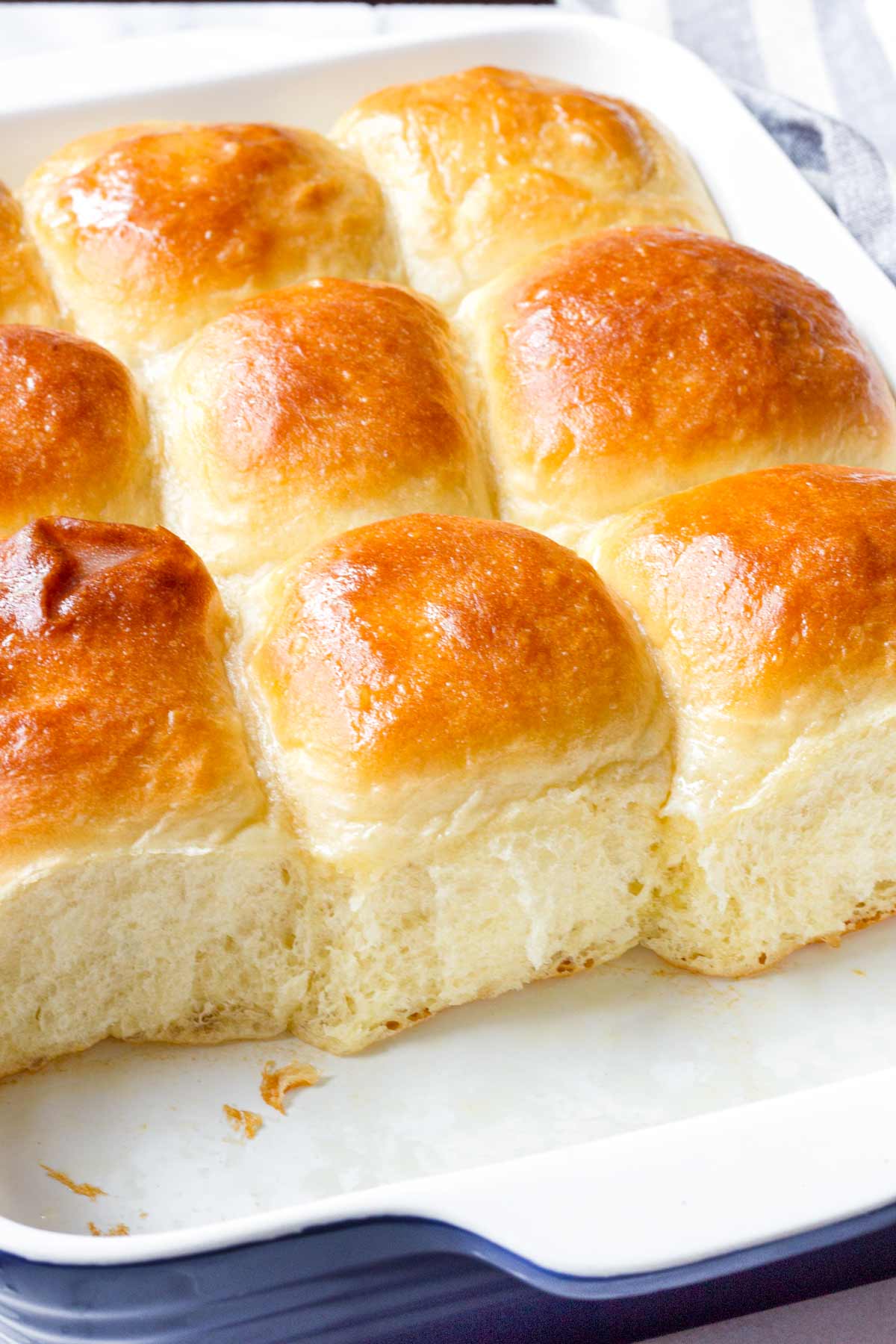
Helpful tips for making Honey Butter Dinner Rolls:
- The dough might feel a bit sticky before its first rise, but that’s completely normal. Just make sure to grease the bowl before placing the dough inside for rising.
- After the first rise, use your knuckles to gently punch down the dough. This helps release the air trapped inside, leading to better results.
- Don’t forget to flour your pastry board or mat before kneading the dough. This will prevent sticking and make the process easier.
- The recipe uses monk fruit sweetener, but feel free to substitute it with regular sugar if that’s what you prefer.
- Avoid over-kneading your dough. Knead only until it becomes smooth and elastic.
- Make sure to let your dough rise for a second time after shaping the rolls. This allows them to become light and fluffy before baking.
- Keep an eye on your rolls in the oven. To avoid burning, set a timer for 15 minutes. Remember, baking times might vary depending on the size of your rolls or your oven’s specific settings.
- If you’re unsure if your rolls are done baking, you can use the toothpick test! Insert a toothpick into the centre of a roll. If it comes out clean, your rolls are good to go! If it comes out with raw dough clinging to it, bake for a few more minutes.
What to serve alongside dinner rolls
These versatile honey butter dinner rolls are the perfect complement to any dinner spread. They pair beautifully with any main course, from comforting pasta dishes to hearty soups and other savoury meals.
Elevate your Sunday dinners, holiday feasts, birthday celebrations, and other special events with these delightful rolls. They’re not just for dinner though. These rolls make a delicious and satisfying snack on their own.
Don’t be afraid to serve them with whatever dinner you’re having – they’re guaranteed to be a crowd-pleaser.
How to store your leftover Honey Butter Dinner Rolls
Let’s be honest, these rolls are so delicious they probably won’t last. But if you do have some leftovers, here’s how to store them:
- Refrigerate: Cover the rolls tightly and store them in the fridge for up to 7 days.
- Freeze: For longer storage, you can freeze the rolls for up to 3 months.
Variations and substitutions
Milk options: Don’t have whole milk? No problem! You can use another type of milk, but keep in mind that whole milk will give the rolls the richest flavour and texture.
Flour power: Bread flour can be substituted for all-purpose flour. This might make the rolls a bit chewier, so choose the texture you prefer.
Yeast alternatives: Out of dry active yeast? No worries! You can use double the amount of fresh yeast instead.
Honey butter preference: Not a fan of the honey butter sauce? No problem at all. Enjoy these rolls plain – they’re still delicious.
Latest


New Album: KCee Releases Feat. Odumodublvck, Teni, Diamond Platnumz – ‘Mr. Versatile’
KCee has a new album called “Mr. Versatile“. This name shows that KCee is good at doing many different types...


Yemi Alade Releases Her Sixth Album, ‘Rebel Queen’
Yemi Alade has just released a new album called “Rebel Queen“. She is a famous singer from Nigeria, known all...


Ayra Starr Launches Doll Collection
Ayra Starr is a famous singer from Nigeria. She has become very popular in the music world. Many people like...


Musician Khaid Returns To Social Media After Protracted Illness; Unfollows All But Olamide
Khaid, a rising Nigerian music star, has recently returned to social media after a period of absence due to a...


Netflix Subscription Prices Increases In Nigeria For The 2nd Time This Year
Netflix has significantly increased its subscription fees for Nigerian users. This marks the second time the popular streaming platform has...


BBNaija 9: You Must Know These 4 Things Before The New Season Of Starts On Sunday
Africa’s most popular reality TV show, Big Brother Naija, is about to launch its ninth season (BBNaija 9) in a...


Burna Boy To Mark The 5th Anniversary Of ‘African Giant’ With YouTube Special
Burna Boy is a prominent African musician who has achieved global superstar status through his award-winning music and record-breaking concerts....


Babatunde Apalowo’s ‘Londoner’ Wins Best Fiction Feature Prize At Durban FilmMart
“Londoner” is an autobiographical film that tells the story of Ayo, a Nigerian bank manager who moves to London to...


Davido Partners With GAC Motors In Multi-Million Deal
David Adeleke, who is famously known as Davido, has entered into a new business agreement with GAC Motors, a well-known...


KCee Teases Release Of New Album, “Mr. Versatile”
KCee is a well-known Nigerian musician who has been making popular music for almost 20 years. He has managed to...
-Ad-




10 Reasons Why Working Out Is Good For You

New Music: BoyPee, Hyce & Brown Joel Feat. Davido – Ogechi

10 Lace Gown Styles To Steal The Show At A Wedding

Why Women Break Up With Men They Are Still In Love With

Shakira To Perform At 2024 Copa América Final On Sunday

My Wedding Dress Is The Most Comfortable Dress I’ve Ever Worn – Sharon Ooja Appreciates Designer Veekee James

Why ‘Isiagu’ Styles Are Becoming Norm At Igbo Ceremonies

Why Do Women Live Longer Than Men? See Reasons Behind The Longevity Gap

6 Ways To Stay Informed Without Sacrificing Your Mental Health

5 Things You Should Always Keep Private
Trending
-

 ARTS & CULTURE7 days ago
ARTS & CULTURE7 days ago5 Powerful Goddesses Who Answer Prayers In Nigerian Traditional Religions
-

 BEAUTY6 days ago
BEAUTY6 days agoHair Care Tips For All Nigerian Hair Types
-

 FAB FRESH4 days ago
FAB FRESH4 days agoRising Artist Litovibes Features Patoranking In New Single, ‘My Way’
-

 FASHION7 days ago
FASHION7 days agoWhat Qualifies As Distressed Fashion?
-

 FASHION6 days ago
FASHION6 days agoSuit Up & Stand Out: How To Wear A Head-Turning Suit In 2024
-

 SPORTS4 days ago
SPORTS4 days agoNigeria Vs Brazil: Time And Where To Watch The Super Falcons’ 1st 2024 Olympics Game
-

 HEALTHY LIVING5 days ago
HEALTHY LIVING5 days agoWhy Fibroids Come Back After Surgery
-

 OPINION6 days ago
OPINION6 days agoHow To Build Trust For A Stronger Relationship




